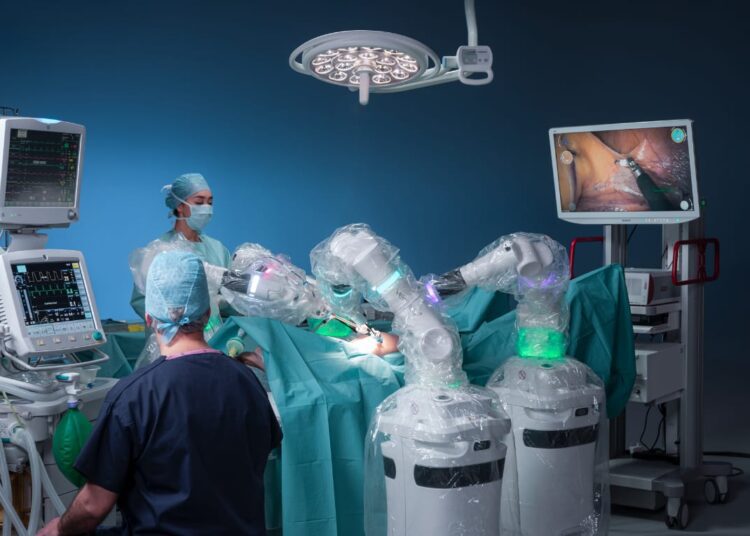For the first time in Egypt, Ain Shams University is ready to use robotic surgery in its teaching hospitals. President of Ain Shams University Dr Mahmoud el-Metini said the introduction of robotic surgery in the health system in Egypt enhances accuracy, flexibility and control during surgical procedures, decreasing human error through computer-enhanced controls.
“Through robotic surgery, which has been imported from the UK, delicate and complex operations that otherwise would have been difficult or impossible by traditional methods will become more accessible,” el-Metini added.
“For example, through the development of three-dimensional vision in narrow parts of the body, surgeons are now able to more safely and reliably operate on micro-tumours,” el-Metini said, noting that specially selected surgeons will be trained on this system before it is fully implemented at Ain Shams University hospitals.
The introduction of robotic surgery for the first time in Egypt coincides with the boom in medicine over recent years and government plans for sustainable development in accordance with Egypt Vision 2030.
Dr Ibrahim Fakhr , a professor of Surgical Oncology at Cairo University, explained that in robotic-assisted surgery, four robotic arms are inserted into the patient through tiny incisions.
One arm holds a high-definition, threedimensional camera that magnifies the tissues and structures of the body tenfold, guiding the surgeon during the procedure.
The other three arms allow a surgeon maximum range and precision of movement. The surgeon controls all four robotic instruments from a nearby console and a surgical team is on hand near the patient.
“The most important part of robotic surgery is that it minimises the need for incisions,” he told The Egyptian Gazette, highlighting the associated health benefits.
“The risk of infection is high with any traditional open surgery as large parts of the body are exposed. With robotic surgery, however, the risk of developing an infection is reduced as only tiny incisions are made, so the patient avoids the potential complications that come with infection,” Dr Fakhr said. “Maintaining normal blood levels during surgeries is a major worry, which can be alleviated with robotic-assisted surgery as it leads to less blood loss because the 3D view allows the surgeon to see blood vessels more easily than during traditional open surgery.
“This enhanced view, combined with the precise movements of the robotic instruments, means surgeons can better avoid blood vessels adjacent to the surgical field,” he told this paper.
“Consequently, a patient underdoing a robotic surgery is likely to have fewer complications, less pain and recover more quickly, saving on the typically high costs that come with a hospital stay,” he said.
“Robotic surgery is a great option for patients who need appendectomy or gallbladder removal, which will normally require opening the entire abdominal cavity.
“They will only need a few small incisions when robotic surgery is employed,” Dr Fakhr concluded.




